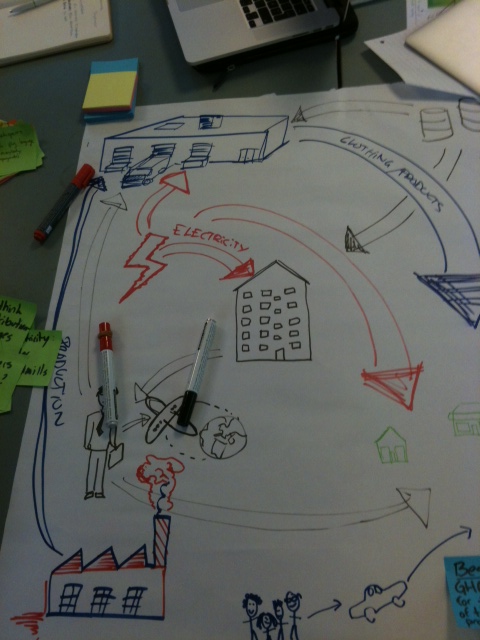An ecosystem provides an overview of complex relationships and a visual basis for group discussion. While there are many ways to create ecosystems, they generally include a range of elements linked to various interactions and effects (information, services or interests, for example). The trick is to find the right balance between complexity and clarity, in order to produce an overview that doesn’t sacrifice essential information. Ecosystems contribute to the understanding of systemic connections found in nearly all contexts. The method enhances the understanding of complex systems (that must often be linked to specific subject knowledge), and can help to increase awareness of and skills in presenting of non-linear relationships.

Method ECOSYSTEM
Add to my favourites

Instructions
Ecosystems are constructed by considering two simple elements through a very simple process:
- First, a theme or a focus area is chosen and the system to be described is defined.
- Then, a brainstorm of the system’s possible actors takes place. Each actor is written on a piece of paper.
- When the actors are identified the connections between them are investigated. Who does what for whom? Who is dependent on whom? What information channels exist within the system? The process is iterative and new actors will always emerge during the analysis of the varied connections.
- Finally, the system is simplified as much as possible with a focus on the object of analysis and the results drawn up on a poster
- The poster can e.g. be presented and discussed in plenum.
Worth Considering
There are numerous variations of and names for this method. (Context maps, for example) You can draw inspiration from the great number of scientific fields that deploy mapping methods.
Preparation
You might want to prepare an example of an ecosystem to share with your students beforehand.
